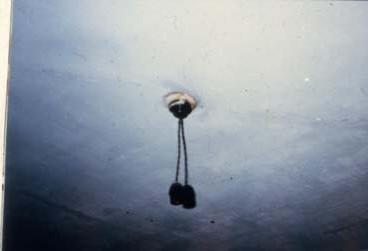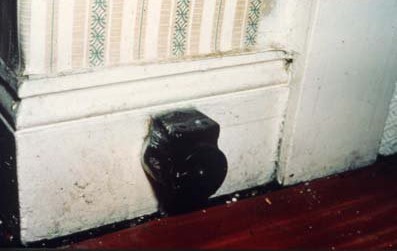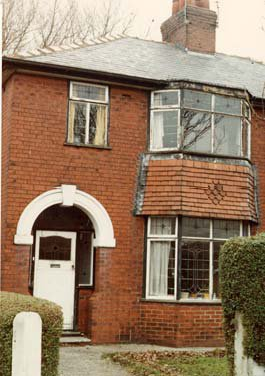



ELECTRICAL
Vulnerable group
Related hazards
Persons aged under 5 years
Fire, Lead
HHSRS VERSION 2
Multiple locations
Yes
No
Secondary hazards
Yes
No
Front elevation
1930's semi-detached house
A) Supply, meter and fuses
DESCRIPTION OF HAZARDS
Dwelling:
Background: This is a 1930's semi-detached house which has generally undergone very little modernisation
since it was built. The electrical system is largely as originally installed.
Supply, meter & fuses: The main supply, meter and fuses are sited at low level in the ground floor hall. The
cover on the fusebox is missing and the wiring above the meter is loose and not fully protected. The wiring is
mostly lead covered.
Power circuit: Many of the power outlets have the original two pin sockets, although one newer circuit with flat
three pin sockets has been installed to serve the hall and other ground floor rooms.
Lighting circuit: The photograph shows the two core, fabric covered wiring to a ceiling light, this being typical
of the wiring to lights throughout the house.
A)
B)
C)
LIST OF RELEVANT MATTERS
LIKELIHOOD & OUTCOMES
A
B
C
# Secondary hazards
A
B
C
a
Electrical installation date
3
3
3
-
None
-
-
-
b
Number & siting of outlets
-
3
1
c
Fuses and meters
2
-
-
d
Earthing
3
-
-
e
Disrepair of installation
3
3
3
Key
3
Seriously defective
f
Presence of water
-
-
-
2
Defective
g
Lightning protection system -
-
-
1
Not satisfactory
-
Satisfactory/NA
HHSRS VERSION 2
SEPTEMBER 2004
Average likelihood, outcomes and HHSRS score for electrical hazards for persons aged
under 5 years in all dwellings, 1997-99.
HHSRS VERSION 2
SEPTEMBER 2004
HEALTH AND SAFETY RATING SYSTEM SCORES
1920-45 House
LIKELIHOOD
1 in
10
Low
High
Average: 19,869
Example
10
< 4200 2400 1300 750 420 240 130
75
42
24
13
7.5
4
2.5
1.5 >
Justification
OUTCOMES
Class I
Class II
Class III
Class IV
Justification
RATING
The open fusebox and exposed wiring above the meter in the hall is particularly
dangerous and tempting to young children. The limited number of 3 pin socket outlets
is also likely to encourage both the use of extension leads and two pin plugs throughout
the house. As well as the increased risk of electrocution, there is also an increased
risk of fire, due to the old wiring and overloading of circuits.
%
Average: 0.6
0.5
< 0.05 0.15 0.3
0.7
1.5
3
7
15
26
38 >
Av: 8.2
10.0
< 0.05 0.15 0.3
0.7
1.5
3
7
15
26
38 >
Av: 49.2
46.4
< 0.05 0.15 0.3
0.7
1.5
3
7
15
26
38 >
Av: 42.0
43.1
< 0.05 0.15 0.3
0.7
1.5
3
7
15
26
38 >
Score:
5
0.5
10.0
46.4
43.1
Although the risk of serious electrocution is much higher than average, the spread of
harms resulting from this does not change. However, with the very high likelihood of a
serious occurence this would give a high score of 2,935 and a hazard rating of B.
Average: 2
I
J
Example
A B C D E F G H
2935
Score
RATING SCORES AFTER IMPROVEMENT
IMPROVE
Justification
NEW RATING
Av: Nos
Likelihood to
1 in 5,600
Outcomes to
0.5 10.0 46.4 43.1 %
The house needs to be totally rewired and a new meter, fusebox and new and
increased socket outlets installed, all to meet the 16th edition of the IEE Regulations.
This should reduce the likelihood of serious harm to better than average, but the
standard average spread of outcomes. Using the lowest standard likelihood, this would
give a score of 5 and Band J.
Improved
A B C D E F G H
I
J